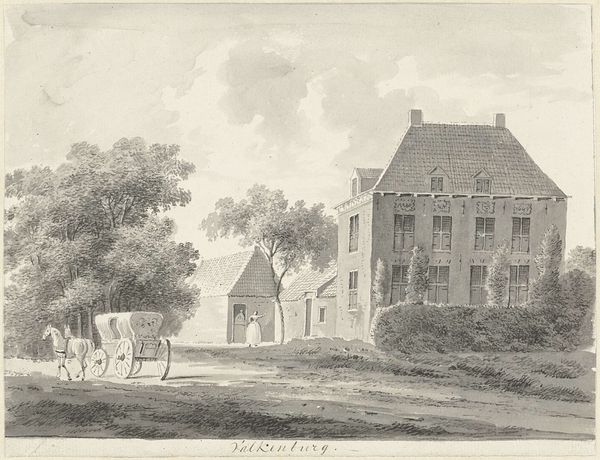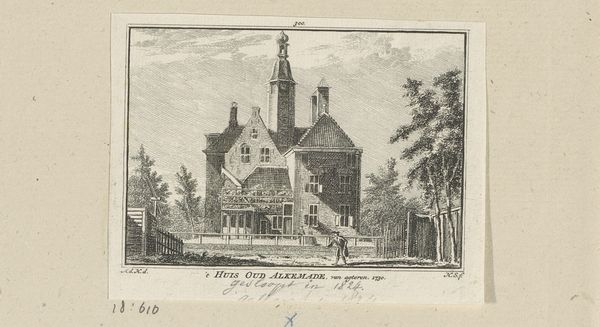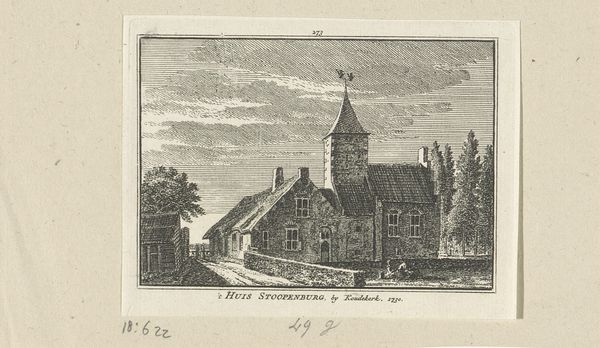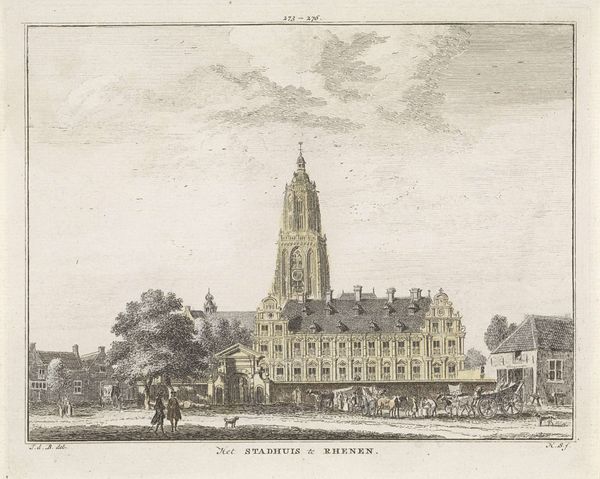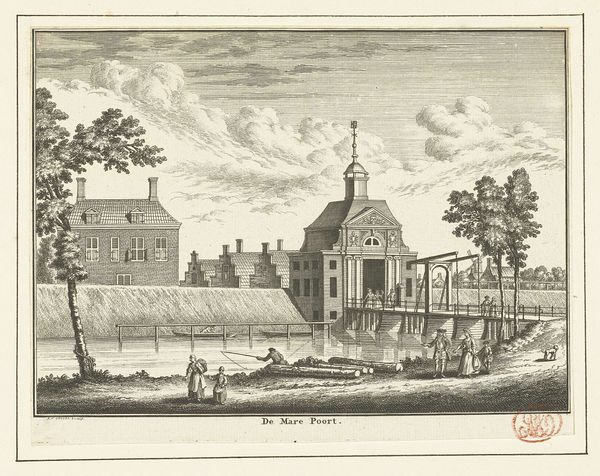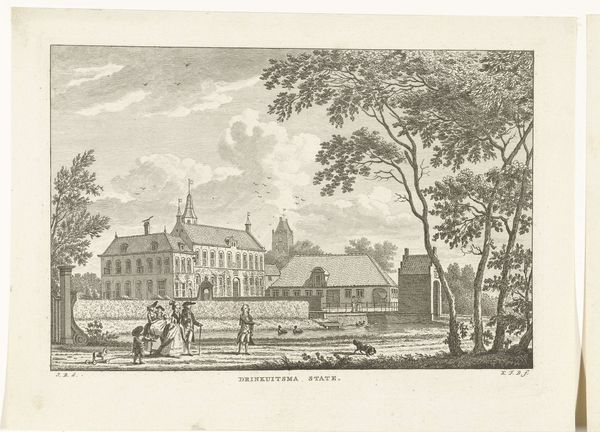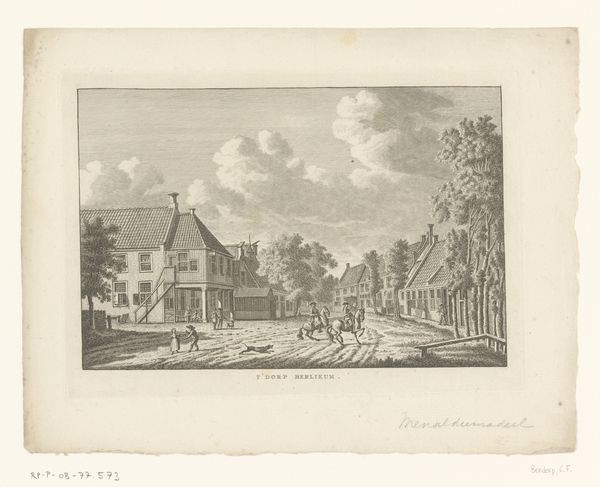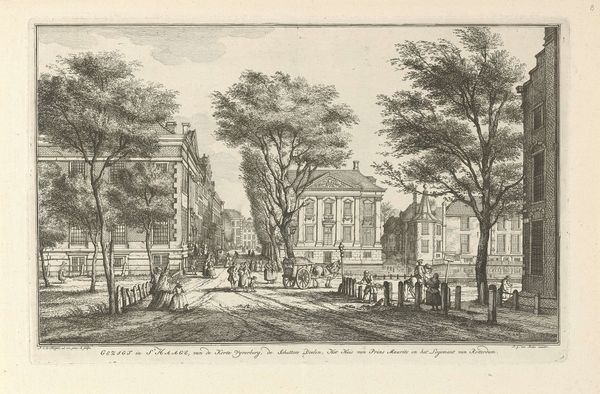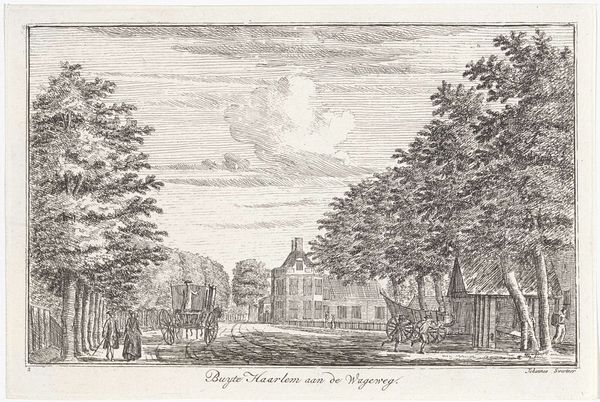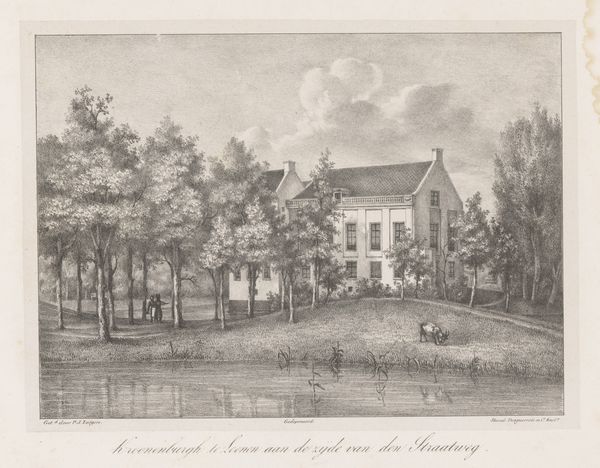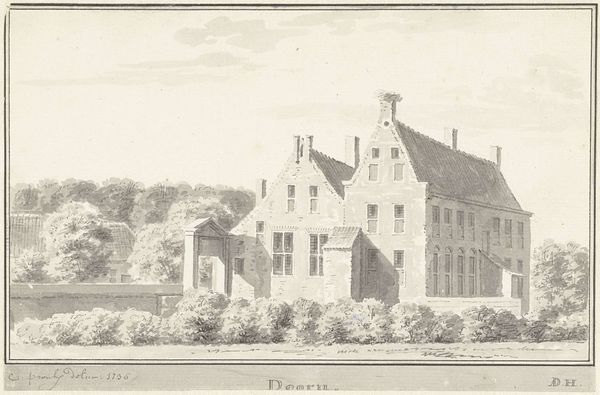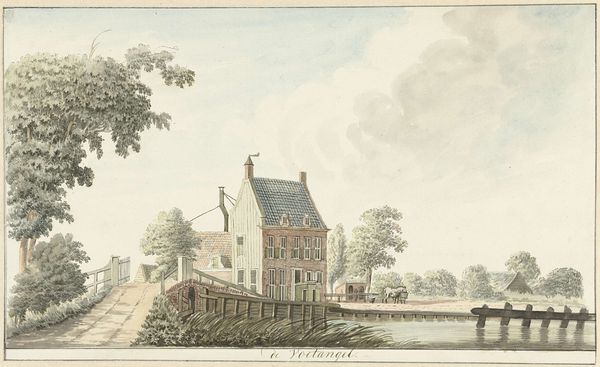
Dimensions: height 80 mm, width 100 mm
Copyright: Rijks Museum: Open Domain
Editor: Here we have Hendrik Spilman’s 1773 etching, "Gezicht op het Huis te Harmelen," housed at the Rijksmuseum. It's a pretty straightforward depiction, quite detailed and seemingly objective... but something about the stoic stillness of the building makes me wonder what stories it could tell. How do you interpret this work beyond its face value? Curator: It's easy to see this as a mere landscape, but let’s dig deeper. Consider the historical context: 1773. The Dutch Republic was a society deeply structured by class and land ownership. Spilman, by focusing on this "Huis," is indirectly commenting on the power structures of his time. What does it mean to monumentalize property? Editor: That’s interesting. I hadn’t thought of it in terms of power. I guess I just assumed it was documenting a pretty place. Curator: It is pretty, yes, but landscapes never just depict nature. Who had access to that "pretty" place? Who benefited from it? The seemingly benign bridge—connecting the house to the world—also speaks to control and access. It controlled who had entry, no? Editor: You’re right. So, Spilman isn't just showing us a house; he’s showing us a symbol of societal hierarchy? Curator: Exactly. And that’s where art becomes powerful. It reflects, critiques, and sometimes, challenges the status quo. Think of whose stories are missing here. Editor: So even an image that seems calm and simple can spark a discussion about inequality? Curator: Absolutely! It reminds us that art is always embedded in a network of social and political relationships, consciously or unconsciously shaping how we perceive the world. Editor: Wow, I never would have looked at it that way without your perspective. Curator: Seeing art through multiple lenses, even a critical one, is how we extract meaning, isn’t it?
Comments
No comments
Be the first to comment and join the conversation on the ultimate creative platform.
